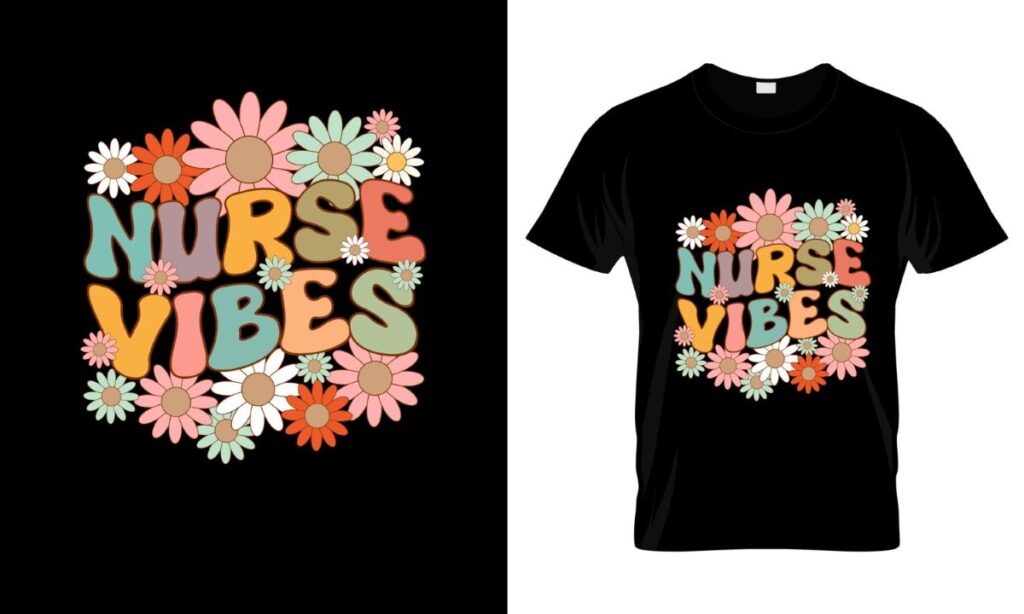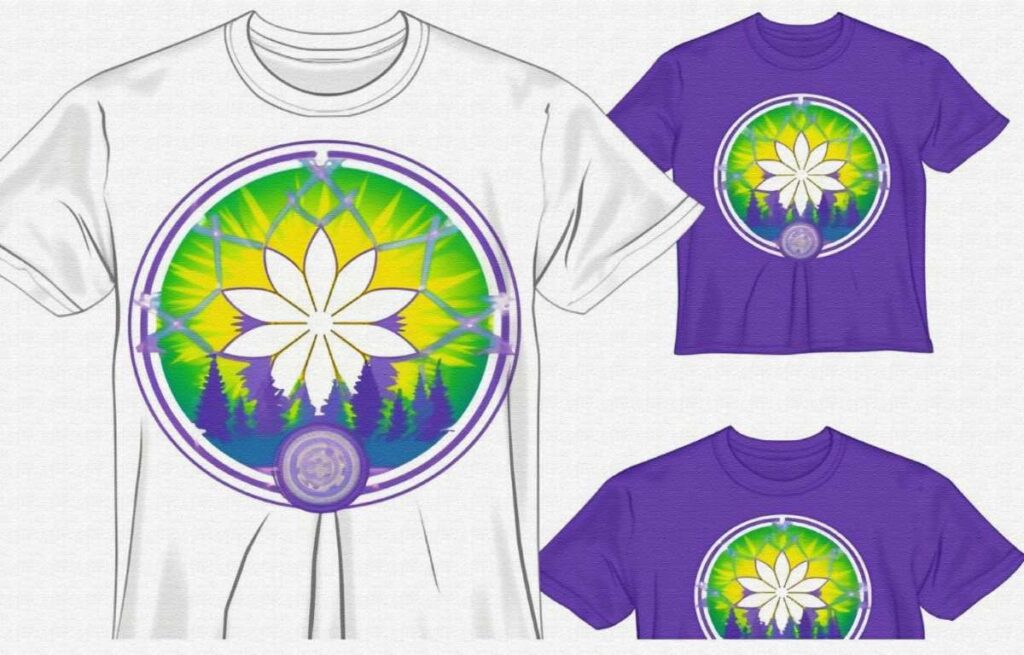DTF Supplies have revolutionized the printing industry by providing a modern and sustainable alternative to traditional printing techniques. As businesses increasingly look for innovative ways to create high-quality prints, Direct-to-Film (DTF) printing stands out for its efficiency and vibrant results. Unlike conventional methods such as screen printing, DTF printing not only minimizes waste but also delivers exceptional detail and color on various fabrics. In this article, we will explore the differences between DTF and traditional methods, addressing the growing demand for eco-friendly printing solutions. Join us as we dive into the advantages of DTF Supplies and discover which printing method might be the best fit for your aspirations.
As we navigate the world of modern printing, the discussion often shifts toward innovative methods, with Direct-to-Film (DTF) technology emerging as a front-runner. This contemporary approach provides an eco-conscious alternative compared to well-established methods like screen printing and heat transfer vinyl, appealing to businesses seeking sustainability. DTF offers unparalleled quality and efficiency, enabling impressive designs that cater to the demands of today’s market. Moreover, the debate between DTF and traditional printing raises important considerations for entrepreneurs looking to balance cost, quality, and environmental impact. In this exploration, we will assess the practical benefits and advantages of utilizing DTF technology against time-honored printing practices.
Exploring the Mechanics of DTF Printing
Direct-to-Film (DTF) printing has revolutionized the way designs are applied to fabrics. This innovative technique utilizes a specialized film that is printed with inks, which are then transferred to textiles with heat and pressure. Unlike traditional methods such as screen printing that often require extensive setup time, DTF printing is designed for greater efficiency, allowing businesses to produce stunning designs quickly and with less waste. Additionally, the vibrant results of DTF have made it a preferred choice for those seeking high-quality prints, as it provides the capability to reproduce intricate details and colors more vividly than other methods.
The mechanics of DTF printing extend beyond just the printing process itself. It also emphasizes the importance of the quality of materials used, including DTF supplies, which can significantly impact the final result. By choosing premium inks and films, businesses can achieve remarkable durability and wash resistance, enhancing the longevity of the prints on garments. Furthermore, partnerships with suppliers that understand DTF technology can help small businesses leverage this printing method for greater profitability and customer satisfaction.
Sustainability in DTF vs. Traditional Printing
Sustainability has become a crucial consideration in modern printing techniques. DTF printing is often heralded for its eco-friendly advantages compared to traditional methods. For instance, DTF processes typically generate less waste due to their efficient printing capabilities and the ability to create on-demand items. This characteristic aligns well with the growing consumer demand for sustainable products, allowing brands to enhance their reputation and attract environmentally-conscious customers.
On the other hand, traditional printing methods like screen printing are often criticized for their excessive use of inks and chemicals, which can lead to significant environmental harm when not managed properly. While traditional methods can still be performed sustainably by some companies using eco-friendly inks, they often require more intensive resources and energy. As industries move towards greener practices, the gap in sustainability between DTF and traditional printing methods continues to widen, making DTF an attractive option for businesses aiming to minimize their ecological footprint.
Cost Comparison: DTF Supplies and Traditional Methods
When considering the cost of printing methods, it’s essential to evaluate both equipment and material expenses. Traditional printing techniques like screen printing often involve higher upfront costs due to the necessary equipment and materials for setup. These methods are typically more economical for large bulk orders, while the costs can become prohibitive for smaller runs, thus making them less appealing for small businesses or freelance projects.
In contrast, DTF printing offers impressive flexibility regarding scale. With reduced setup times and minimal waste, businesses can operate efficiently even with low production volumes. Investing in DTF supplies can be less daunting for startups and entrepreneurs who are just beginning to explore the market. As the accessibility of DTF technology increases, many small businesses are discovering that they can produce high-quality prints without the financial constraints associated with traditional printing methods.
Quality: DTF vs. Traditional Printing
Quality often stands as a crucial determinant in the choice between DTF and traditional printing techniques. DTF printing is renowned for its ability to achieve photorealistic images, characterized by vibrancy and detail that can outshine traditional methods like screen printing. As DTF technologies evolve, their capacity to create intricate designs grows, appealing to businesses that require exceptional print quality for custom apparel and promotional items.
On the other hand, traditional printing methods have established themselves over decades as reliable techniques capable of producing vivid colors and durable designs. Screen printing, in particular, is celebrated for its consistency in color matching and long-lasting prints. For large order productions, traditional techniques can deliver robust quality, especially when color accuracy is a priority for branding. Thus, businesses must weigh their specific quality requirements against the capabilities of each printing type.
Accessibility of DTF Printing for Small Businesses
One of the defining advantages of DTF printing is its accessibility for smaller businesses and independent creators looking to enter the printing realm. With the advent of compact and user-friendly DTF printers, such as the A3 DTF printer, aspiring entrepreneurs can utilize advanced printing technology without significant investment barriers. This democratization of printing technology allows small businesses to thrive in competitive markets by providing high-quality output that was previously accessible only to larger firms.
Moreover, the learning curve associated with DTF printing tends to be more manageable compared to traditional printing methods. This accessibility empowers newcomers to produce professional-level products with relative ease, contributing to their overall growth and success. The supportive community around DTF printing, including suppliers specializing in DTF supplies, further assists small businesses in optimizing their operations and achieving desired results.
Informed Decision: Choosing Between DTF and Traditional Printing
Ultimately, the decision between DTF and traditional printing techniques comes down to understanding your specific needs and customer expectations. For businesses prioritizing sustainability, higher-quality prints, and flexibility in production volumes, DTF printing stands out as a compelling option. The investment in DTF supplies pays off through reduced waste and the ability to cater to personalized orders, essential in today’s market.
Conversely, companies that consistently handle large bulk orders may find that traditional printing methods suit their financial and operational strategies better. With well-established techniques like screen printing offering benefits in durability and cost-effectiveness, understanding the nuances of each method is key. By weighing these factors, businesses can make informed choices that align with their brand ethos and operational goals.
Frequently Asked Questions
What are the advantages of using DTF Supplies compared to traditional printing methods?
DTF Supplies offer several advantages over traditional printing methods such as screen printing and heat transfer. Primarily, DTF printing allows for vibrant, high-quality prints on various fabrics with exceptional durability. It also promotes sustainability by reducing waste during production, making it a more eco-friendly choice for businesses focused on sustainable printing practices.
How does DTF printing achieve high-quality prints compared to traditional printing?
DTF printing achieves high-quality results by printing designs directly onto a film, which is then transferred to the material using heat and pressure. This method allows for photorealistic images with intricate details that traditional techniques may struggle to replicate. The advancements in DTF Supplies technology ensure that the prints are vibrant and long-lasting.
Is DTF printing more sustainable than traditional printing?
Yes, DTF printing is generally considered more sustainable than traditional printing methods. It reduces material wastage and energy consumption, aligning with the increasing demand for eco-friendly printing solutions. Businesses using DTF Supplies can appeal to environmentally-conscious consumers, making it a beneficial option in today’s market.
What are the cost implications of DTF printing versus traditional printing for small businesses?
For small businesses, DTF printing can be more cost-effective than traditional printing, especially for small runs and print-on-demand services. DTF Supplies reduce setup times and material waste, which lowers costs for smaller jobs. In contrast, traditional printing may be more economical for large bulk orders due to setup costs being spread over a greater number of prints.
How accessible are DTF Supplies for new entrepreneurs compared to traditional printing?
DTF Supplies have become increasingly accessible for new entrepreneurs, thanks to innovations like compact DTF printers. These advancements allow freelancers and small business owners to produce high-quality prints without significant upfront investment typically required for traditional printing setups, which often involve larger machinery and complex processes.
What should I consider when choosing between DTF Supplies and traditional printing for my projects?
When choosing between DTF Supplies and traditional printing, consider factors like the quality and durability of prints required, the volume of production, sustainability goals, and budget constraints. DTF printing excels for smaller runs and offers vibrant, sustainable solutions, while traditional printing remains strong for larger quantities and established color matching techniques.
| Aspect | DTF Printing | Traditional Printing |
|---|---|---|
| Definition | Prints designs onto film for transfer to garments. | Includes methods like screen printing and heat transfer. |
| Key Benefits | – Eco-friendly – High-quality prints – Accessible to small businesses |
– Established techniques – Cost-effective for bulk orders – Better color consistency |
| Cost Effectiveness | More economical for smaller runs due to less setup time. | Cost-effective for large quantities with lower per-unit costs. |
| Quality | Produces vibrant, photorealistic, and durable prints. | Known for vivid colors and durability but less intricate designs. |
| Sustainability | Reduces waste in production, appealing to eco-conscious consumers. | Higher waste in production and less eco-friendly compared to DTF. |
| Accessibility | Innovations in printers have democratized high-quality output. | Established techniques; less accessible for new businesses. |
Summary
DTF Supplies are leading the charge in revolutionizing the printing industry, offering unique advantages over traditional printing methods. With an emphasis on sustainability, DTF provides a more eco-friendly option for small businesses and entrepreneurs looking to create high-quality designs. The vibrant outputs and ease of access associated with DTF printing make it an ideal choice in today’s market, particularly for those focused on smaller production runs and innovative printing solutions. While traditional printing techniques still hold their ground in bulk production, understanding the strengths of DTF Supplies allows businesses to make informed decisions that align with modern consumer values and environmental considerations.



